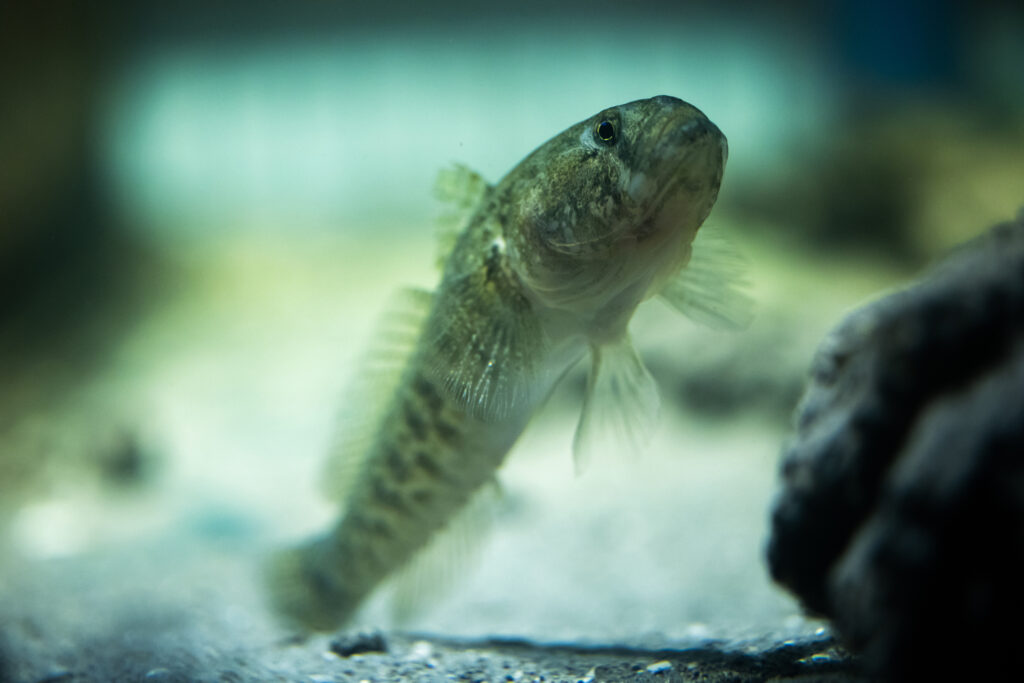Most of the time in the media, there’s a strong focus on the larger marine animals of the world, like Great White Sharks, Killer Whales, and Giant Manta Rays. These large animals, while beautiful, fascinating, and well worthy of discussion, have had enough of the spotlight!
At Hastings Aquarium, we want to celebrate the smaller fish, some of which we are lucky enough to house in our aquarium.
So, get your magnifying glasses out as we explore the tiny world of the smallest fish on Earth.
What is the Smallest Fish in the World?
The smallest fish in the world is the Paedocypris progenetica, a species of tiny cyprinid fish native to waters of Sumatra and Bintan.
This adorable fish measures in at just under a cm, with mature adult females growing up to 7.9mm, which is only about the length of five credit cards stacked on top of each other.
It’s so small that it evaded scientists for many years, only being discovered in 2006 by ichthyologist (a zoologist who specialises in fish) Heok Hui Tan.
If you can manage to spot it, the Paedocypris progenetica is recognisable from its translucent body with a red stripe extending to the tip of its caudal fin.
Examples of other small fish
Even small fish need friends, so let’s take a look at some of the other small fish that inhabit the world’s waters.
Stout Infantfish
The Stout Infantfish (Schindleria brevipinguis) is native to the water surrounding the Great Barrier Reef and Osprey Reef. Females in this species reach approximately 8.8mm, so just slightly larger than the Paedocypris progenetica.
Funnily enough, the stout infantfish was thought to be the smallest fish in the world until the Paedocypris progenetica was discovered.
If the Stout Infantfish is so small, what does it find to fit in its tiny mouth? Well, it certainly isn’t other fish! In fact, they have to feed on plankton, which are microscopic marine organisms that drift in ocean currents, sustaining them for their two-month lives.
Danionella cerebrum
The Danionella cerebrum is a translucent fish that measures up to 13.5mm in length, with the smallest brain seen in any invertebrate. You can find them in shallow waters off the coast of Myanmar.
These fish are famous for their incredible ability to create a very loud noise by striking its swim bladder. The sound can be up to 140dB, or about as loud as a live rock band!
Like many other species of small fish, they primarily feed on plankton and other small invertebrates.
Goby fish (Gobiidae)
Goby fish are a family of bony fish that comprises over 2,000 individual species, making it one of the largest fish families. Most goby fish aren’t quite as small as our friends mentioned above, but the smallest example – the Dwarf Pygmy Goby (Pandaka pygmaea) – only grows to about 9mm.

The diet of the goby fish varies from species to species, but generally speaking, they feed on small invertebrates, crustaceans, and sometimes even smaller fish, although the Dwarf Pygmy Goby would struggle to find a fish small enough!
Their massive diversity means that they’re found all across the world, wherever you can find shallow, coastal waters, including rocky sea beds, rockpools, estuaries, and tidal areas.
See some of the smallest fish at Hastings Aquarium!
Hastings Aquarium isn’t just home to large fish like the Ballan Wrasse and Green Moray Eel, we also have a range of goby fish that are amongst the tiniest fish in the world!
Don’t let their small size fool you, they’re still bursting with personality and fascinating to watch in the water.
The Torpedo Goby is as exciting as its name suggests, with wing-like fins and striking blue colouration around its eyes.
The Tiger Goby takes its name from the striped feline, with incredible orange, white, and black stripes draped across its body, giving an uncanny resemblance.
Our extensive range of goby fish at Hastings Aquarium is a testament to the variety and diversity that exists within the family. Some are brightly coloured, some are larger than others, some lack colouration altogether!
If you’d like to see our goby fish up close, and have one of our experts talk you through some of their unique characteristics, book your tickets to Hastings Aquarium now!
